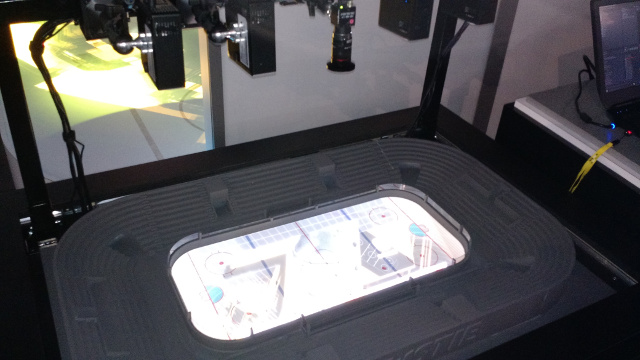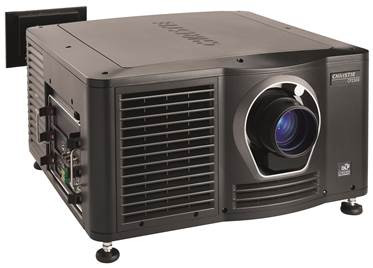Christie used CinemaCon 2017 to show a new all-in-one RGB laser projector, introduce a new Xenon-based DCI compliant model and showcase its lobby solutions.
Our meeting started with a presentation in one of the demo rooms where Christie went through a Total Cost of Ownership (TCO) analysis for a 20K lumen class of projector comparing a “laser phosphor” projector to the Christie CP2220, a Xenon-lamp based model. Based on the assumptions in the slide below, the laser phosphor solution costs $74, 976 while the Xenon solution is $60,654. This argument was used to make the case that laser phosphor only made sense for 10K lumen products and that Xenon and RGB laser should be the main considerations.

Further, Christie said that they see laser phosphor only as a transitional solution to full RGB laser. RGB laser has higher efficiency because there is no need for a yellow notch filter and they see next generation red and green lasers coming to further improve efficiency and lower costs. Clearly, that is not what Barco thinks.
Christie then described their newest all-in-one RGB laser platform. To date, Christie has separated the lasers and chiller from the projection head, delivering light via fiber optics. The new all-in-one platform will offer 12K to 23K lumens in 2K or 4K versions with contrast up to 5000:1 – so they are HDR capable, says Christie (checkerboard contrast has not been measured yet but they expect it to be in the 700:1 range). They will also include Christie’s new Series 3 electronics that has an improved user interface, built-in automation and a choice of IMBs.
The first model, the CP4325-RGB was being demonstrated as a prototype at CinemaCon (photo). This will be a 23K lumen 4K resolution model that will ship in Q4’17. They hope to replace a number of older series I and series II projectors with this model, plus facilitate new build outs. At this lumen level, this is not just for the PLF market, with dual stacking possible for bigger screens.
The CP4325-RGB is Christie’s first projector to use an all-laser diode design – including the green laser which to date has been a frequency doubled 523nm type. It features liquid cooling of the DMDs plus the blue and green lasers. A thermo-electric cooler is sufficient for the red lasers. The higher contrast is achieved by using an improved projection lens with less flare and a smaller aperture. Normally, a smaller aperture will reduce light output, but the RGB laser system operate at a much higher f-number so the light loss is much less – maybe 10% vs. a 30% loss for a Xenon system.
The projector also offers the option of running in a constant luminance mode. This means the output starts at a lower level, but can maintain this over the rated lifetime. A color gamut out close to the BT.2020 specification is possible too, of course.
Christie also announced a new Xenon-based projector, the CP2308, which will share the same chassis and Series 3 electronics as the CP4325-RGB projector. It is capable of 9,000 DCI lumens and supports alternative content sources through dual HDMI ports. It can be ordered with a Christie Series 3 Integrated Media Block (IMB), as well having backwards-compatibility with third-party Series 2 IMBs. – CC


